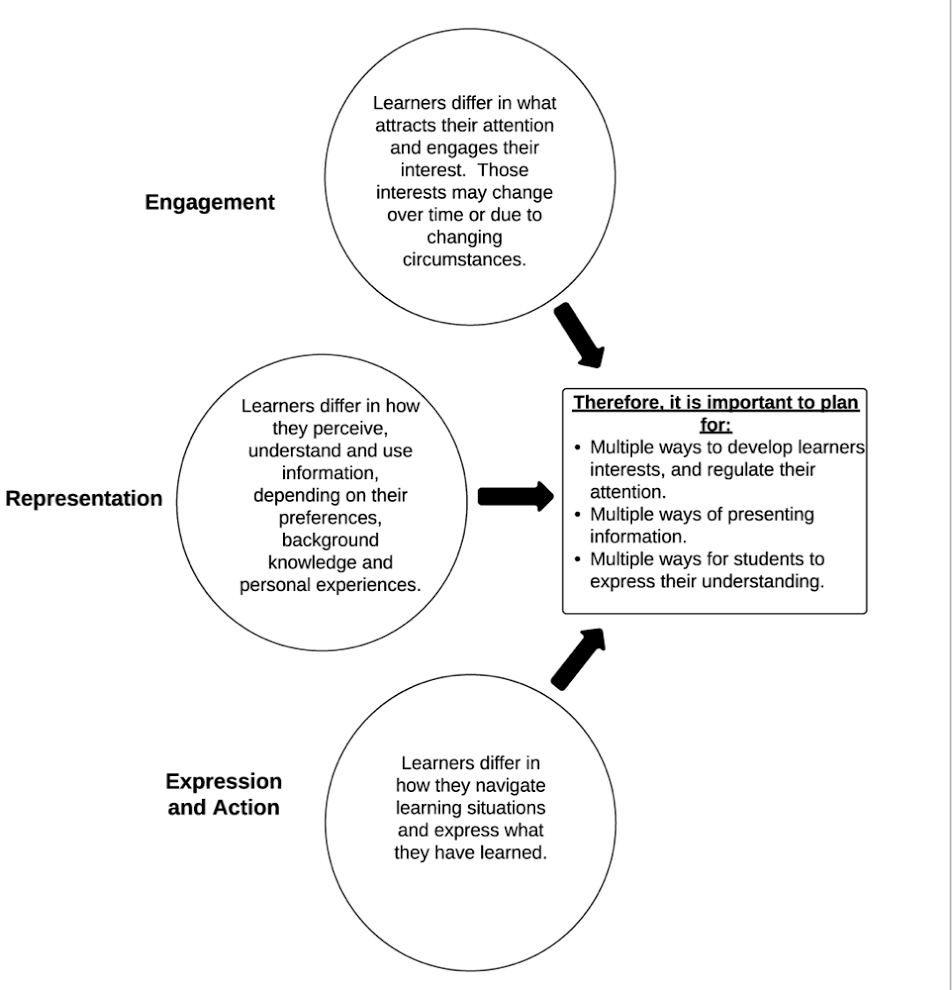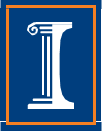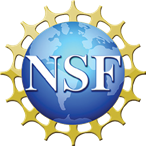Project TACTIC: Teaching All Computational Thinking through Inclusion and Collaboration
TACTICal Teaching Brief
Introduction
The Universal Design for Learning (UDL) framework provides guidelines that can help teachers proactively plan for the academic diversity present in classrooms. This is especially important when it comes to CS education due to the historic underrepresentation of women, people from different cultural backgrounds, and people with disabilities in CS fields. If we can think about ways of meaningfully engaging ALL learners through the UDL framework, then we can address the barriers that are inherent in my CS activities.
UDL is a proactive approach to planning of curricular opportunities. A UDL approach takes into account learner variability when considering goals, methods of instruction, assessments and materials. It is organized around the principles of providing students with multiple means of representation, expression and engagement with their learning.
Scenario
Mr. Gibson is going to be teaching CS within his mathematics instruction this year. At the beginning of the school year, he attended a school-wide professional development (PD) workshop on Universal Design for Learning. In this workshop, Mr. Gibson learned about how the three UDL principles could be used in planning instruction that is engaging and accessible to all his students, including those with disabilities. He wonders how he might apply these principles to the CS activities that will take place this year with all of his students, including three students with disabilities who are included in his 3rd grade class.
- Rachel has a learning disability related to math;
- Roberto has a social communication disorder that kept him from verbally expressing his needs; and
- Connie has an emotional behavior disorder as well as a speech/language impairment and often does not interact with her peers.
Mr. Gibson also realizes that beyond the needs of these three students, his class has a lot of academic, social, and cultural diversity. Meeting each of the students’ individual needs will be a challenge this year! In thinking about the PD he attended this summer and the students in this class, he wonders how UDL can help him plan his integrated math and CS lessons in a way that will engage all his students, including Rachel, Roberto, and Connie. Because Ms. Gomez, the special education teacher, helped lead this PD, Mr. Gibson decided to meet with her to brainstorm some ideas about how UDL might be leveraged to provide greater opportunities for success for all learners, including those with disabilities.
Adapted from: National Center on Universal Design for Learning: The Three Principles of UDL

Common Challenges
- Teachers believe that UDL is important, but do not know where to start or how to find time to plan in this manner. It looks really time consuming.
- Although UDL is intended to address whole-class instruction, it is unclear how individual student needs fit within this framework.
- UDL seems to make sense conceptually, but it’s hard to see how it would apply in CS activities.
Universal Design for Learning within Computer Science Education
| Multiple Means of Representation | Multiple Means of Action and Expression | Multiple Means of Engagement |
|---|---|---|
Provide options for perception
| Provide options for physical action
| Provide options for recruiting interest
|
Provide options for language mathematical expressions, and symbols
| Provide options for expression and communication
| Provide options for sustaining effort and persistence
|
Provide options for comprehension
| Provide options for executive functions
| Provide options for self-regulation
|
Israel, M., Lash, T., Ray, M. (2017). Universal Design for Learning within Computer Science Education. Creative Technology Research Lab. University of Illinois. https://goo.gl/1nP6sx
Strategies
- Start small, utilizing UDL principles in one lesson or unit at a time.
- Begin planning by thinking about what is most important in the unit/lesson and then what would make that content difficult for your students. By focusing first on barriers to learning, you can begin to isolate which checkpoints in the UDL framework to begin with.
- Don’t attempt to do all the checkpoints in the entire UDL framework. Start with one or two UDL checkpoints and build up to a realistic number. More isn’t always better!
- Reflect on how UDL works in other content areas. For example, if multiple means of representation in mathematics means that you provide students with options for manipulatives and the use of video to reinforce learning, these same strategies can be used in CS education by using Unplugged activities and worked video examples.
- Consider Goals, Environment, Materials, and Assessment (see example lesson plan)
- Use the table (Figure 2) and lesson plan template we provided for examples to launch this work. (Note: It’s not an exhaustive table.)
Summary
Mr. Gibson is excited about utilizing a UDL approach when planning for his computer science lessons for his students. With Ms. Gomez’s help, him saw that starting small can make integrating a UDL approach feasible and that planning for learner differences ahead of time can provides benefits for all of the students in his class including those with disabilities.
Recommended Citation:
Israel, M., Lash, T. A., & Jeong, G. (2017). Utilizing the Universal Design for Learning Framework in K-12 Computer Science Education. Project TACTIC: Teaching All Computational Thinking through Inclusion and Collaboration. Retrieved from University of Illinois, Creative Technology Research Lab website: https://CTRL.education.illinois.edu/TACTICal/udl
Note: There are no copyright restrictions on this document; however, please use the proper citation.

 Funding for this
research was provided by the National Science Foundation (award #1639837). Any opinions, findings, conclusions,
or recommendations expressed in this material are those of the authors and do not necessarily reflect those of
the NSF.
Funding for this
research was provided by the National Science Foundation (award #1639837). Any opinions, findings, conclusions,
or recommendations expressed in this material are those of the authors and do not necessarily reflect those of
the NSF.
For More Information, please contact: Maya Israel (misrael@coe.ufl.edu).
